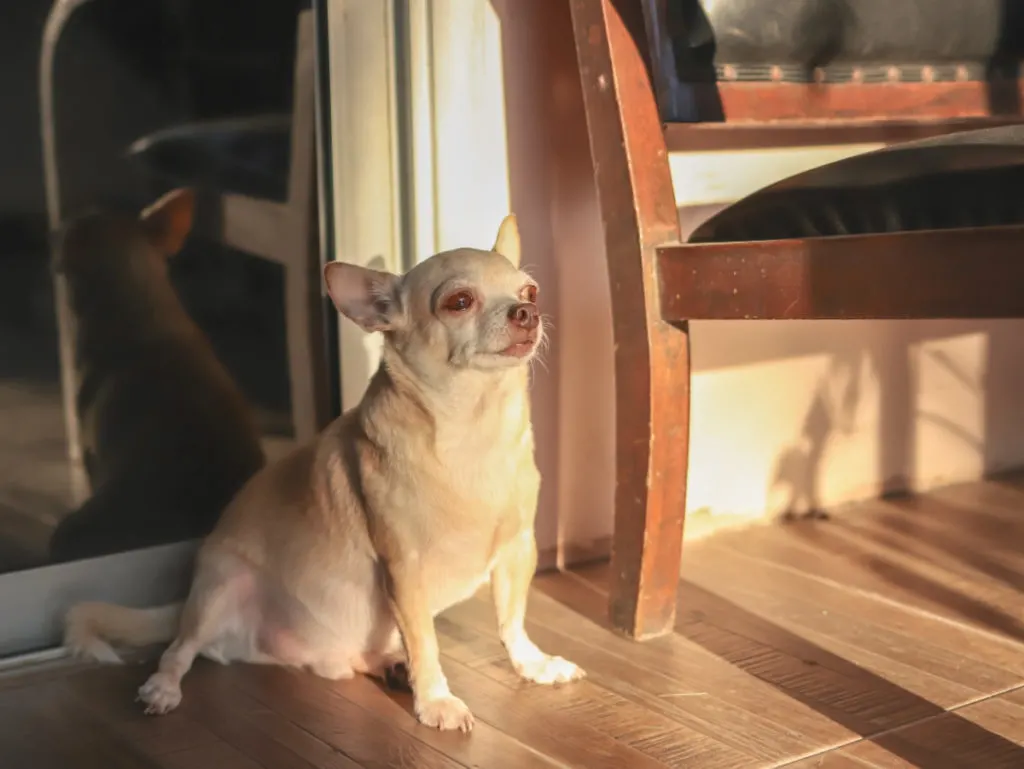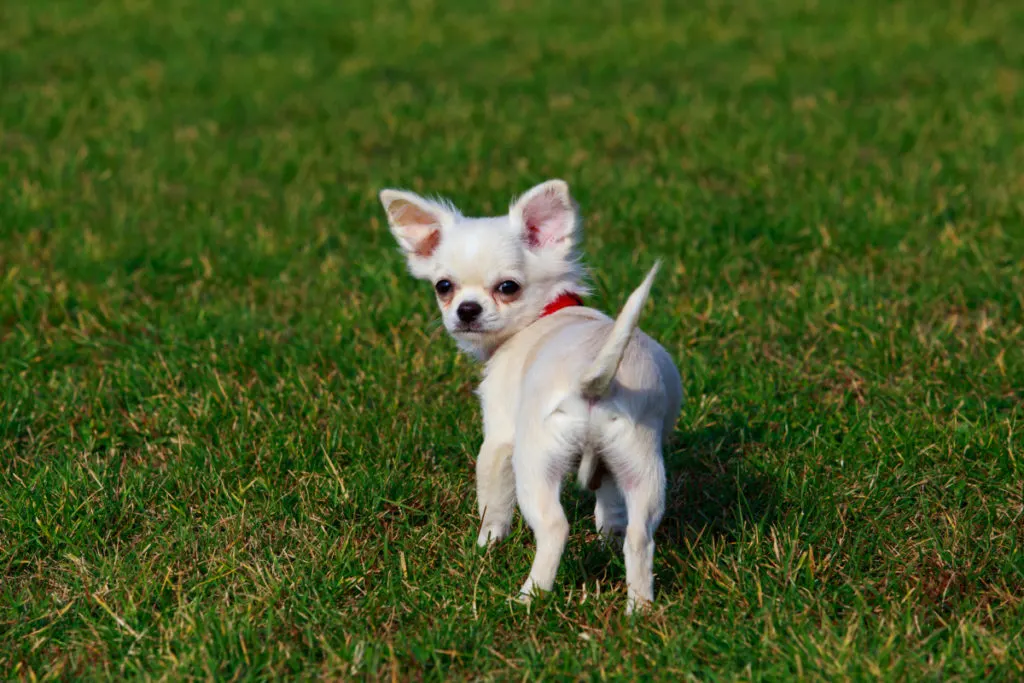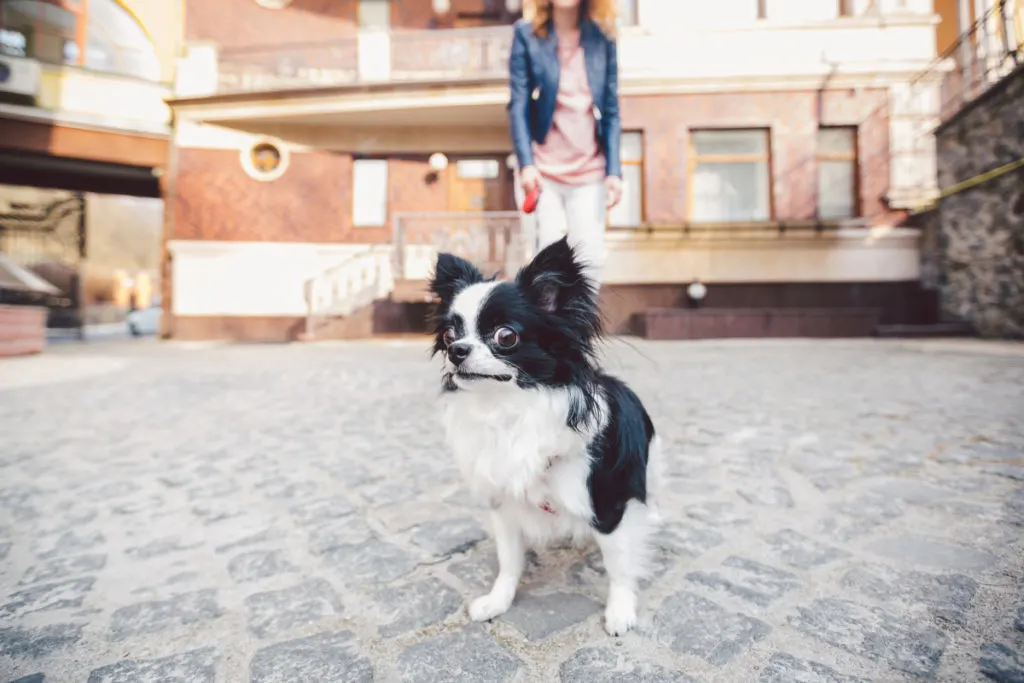Part of being a responsible pet parent involves training your dog, not only to have a well-behaved dog to enjoy for years to come, but also for their safety. One of the scariest situations for pet parents is when their dog runs away and refuses to come when called; dogs do not stop, look and listen before they cross the street, and they cannot find their way home if they run too far away. This article will offer you guidance to get started training your dog this life-saving skill.

Why Does My Dog Run Away When I Open The Door?
There are many reasons dogs choose to run out the door if it is opened, each is unique to the individual dog’s personality. The most common motivations for fido to flee are:
High prey drives.
Dogs who have a high prey drive for prey animals, most often small animals such as squirrels, rabbits, or mice, will chase them whenever the opportunity presents itself. If a door is open and a dog with a high prey drive spots their prey of choice or smells it nearby, they likely will bolt after it.
Depending upon the strength of the prey drive, some dogs will completely tune out all commands and remain focused on the prey animal. This is a dangerous situation because they may run into the street or run so far away that they get lost.
I personally lost a dog this way when I was a young teenager. Ginger was a very well-behaved black and white terrier mix and she always came when called. We never worried about her getting hit by a car because we lived on a quiet suburban street with little traffic.
One day, she ran out the door and I called her back to me. She turned to look at me but then spotted a cat across the street and ran to chase after it. At the same time, a teenage girl was speeding down our street and couldn’t stop in time. Her car hit Ginger and I had the horror of watching my sweet fur baby die.
It happened almost 50 years ago and I still haven’t completely gotten over it.
Mating.
Dogs who are not neutered or spayed may attempt to escape if they catch the scent of a potential mate.

Bad habits.
If you allow your dog to run out another door freely, such as out the back door of your home for potty breaks or naps in the sun, your dog may assume that anytime you open a door he or she may go through it. The best way to prevent this misunderstanding is to form good habits through consistent training.
For example, do not just open the back door and usher your dog out. Call your dog over to the door and ask, “Do you need to go potty?” then have them sit and wait before they go outside. When your dog looks up at you for directions then say, “Ok! Go outside!”
Adjusting.
If you recently adopted a dog, they may not yet have bonded to your family and home, and may run away seeking something familiar.
We dealt with this when my young son adopted a neighbor’s dog a block away. Roxy was just 4 months old when we got her but she had lived with her first family since she was 6 weeks old. They decided they couldn’t handle a puppy and gave her to my son.
She had a great life with us and loved all of us, but for the first 6 months or so, she ran out every chance she got to go back to her previous home. She did have to cross a road and she was pure black so we often worried that she would get hit by a car.

Training Supplies
Before you can begin training, you will need to gather supplies:
- Time to dedicate to training, first during quiet times, then during busy times. Be sure to work on training when you do not have to think about rushing through to get to work, an appointment, or another errand.
- A high-value training treat, the more odiferous the better, such as these Pet Botanics Bacon training treats.
- An assistant. Another human to quietly hold the long leash is important for safety.
- A long leash. An extra-long training leash is needed to train your dog safely. This 15-foot leash is an excellent choice. Retractable leashes work too, but should only be used for training and require more vigilance from the assistant, as they are the most likely style of leash to cause a serious injury.
- Gates. Be sure to place gates around any door that your dog attempts to escape through to keep them safe in the interim; learning not to dash out the door is not an overnight process.
How Do You Train A Dog Not To Run Away?
Training a dog not to run away involves a two-step process; good door manners teach a dog not to dash out the door and teaching a dog to return when called if they do dash is formally referred to as “recall training“. If you consistently work on these skills, your dog should learn not to run away and to come back to you when called if they do get away.
However, keep in mind that these skills must be practiced regularly and used consistently for your dog to remain responsive to them. Also, remember that no one is perfect; your dog may not listen 100% of the time, so continuing to take precautions to keep your dog safe is important, such as never allowing them to roam off-leash and keeping gates near doors to prevent an accidental escape.
Let’s discuss these skills further:
Training Door Manners
The door manners that help dogs learn not to dash out open doors are sitting and waiting when a door is opened. To train your dog in these manners:
- Start by training yourself and your family! Most dog owners open the door for their dog and have them exit first; logistically it tends to make sense. However, it teaches dogs that when a door is opened they are to rush out of it. Everyone in the family needs to be aware of what is expected of your dog too; it will be harder for your dog to learn if everyone who handles him or her is doing things differently.
- Whenever you bring your dog to a door to let him or her outside, whether they are on the leash for a walk, or off-leash to potty quickly in a fenced yard, command your dog to sit.
- Next, open the door and command your dog to wait. If your dog stands up from sitting and or takes a step towards the door, close the door and command them to return to sit.
- Your ultimate goal is for your dog to look at you, seeking your permission to go outside. If your dog remains seated and looks at you, say your release word of choice such as “OK!” then say your command to go outside such as, “Go outside”, and open the door.
- Be sure to work on this every time you bring your dog to a door to exit your home. Training sessions that go on too long are not successful, but do practice it every time you take your dog outside. Continue practicing even after your dog masters the skill to reinforce it effectively.
Recall Training
Recall training means teaching your dog to return to you when called. Your ultimate goal is having your dog stay at the door and come to you when you call them outside, or if your dog runs out the door, returning to you when you call them back inside.
This part of training is usually the most challenging. As such, many pet parents consider hiring a professional dog trainer to assist them. Even if you decide that you would be most comfortable working with a professional trainer, you can always try starting at home.
- First, your dog should be attached to an extra-long leash for safety. Once your dog is leashed, have your assistant sit quietly near the door and hand your assistant the leash in a low-key manner. Your assistant’s only job is to be in the background, holding onto the leash so that if your dog does not stay when commanded or return to you when called, he or she cannot run away and be injured or lost.
- Next, bring your dog to the door that you are most concerned about them running out of, which is usually the front door. Command your dog to exit and give them a training treat when they do.
- Command your dog to stay, then walk out the door. Start by only walking a few feet away. As your dog improves their staying, gradually increase the distance. Most pet parents work towards the goal of their dog obeying this command from the furthest point they usually walk from their home without formally walking the dog, which is most often the mailbox. Be sure to give them a tiny training treat after successfully following every command.
- Try to have your dog stay in place for a very short time initially, such as 30 seconds to start, gradually increasing the time as their obedience improves.
- If your dog stays in place, call them to you and have him or her stay in place again. Then walk back into the house and call your dog to come inside.
- Make time to work on this at least once, if not twice, weekly for about fifteen minutes until your dog listens consistently. Thereafter, be sure to practice once weekly or every two weeks to keep the skill strong.
- While your dog is learning this, do praise them and give them a treat when they are successful. You can gradually decrease the treats as it becomes ingrained and second nature to them.
Be patient with training; it will not happen overnight. Be sure to celebrate your dog’s obedience wins like they cured cancer to reinforce the commands and encourage your dog to listen in the future. Though it might be difficult at times, it is an excellent bonding experience that will ultimately be good for both you and your dog.

What Steps Should You Take To Keep Your Dog Safe?
It takes time to train your dog, and even well-trained dogs may not listen every single time if something tempting captures their attention. As such, you must practice the commands your dog has learned and continue taking precautions to ensure your dog’s safety. Here are simple precautions to take to keep your dog safe during training and beyond:
- Put a collar with a name tag listing your contact information on your dog to ensure that if he or she runs out the door and you are unable to find them, whoever finds them knows where their home is.
- Get your dog microchipped to help reunite you in the event he or she runs outside and is lost without wearing a collar.
- Always take the time to work on general door manners; once you begin working on this skill, do not allow your dog to dash out the door around you. Consistency is the key to success here.
- Keep the family on the same page. If other people live with you, take time to explain the training and the importance of working on it consistently with anyone who handles your dog regularly.
- Install gates that will block your dog from accessing doors so that if you are unable to address your dog, or in the event that someone who is unfamiliar with your dog’s training opens the door, or the door is inadvertently left open, he or she is blocked from freely accessing it.
- Only allow your dog to be off-leash in securely fenced areas; never allow your dog to roam freely off-leash. This is unsafe for a multitude of reasons, but in regards to door dashing, it gives them the motivation to dash to see something they discovered on their “walkabout” as Crocodile Dundee would say.

Conclusion
Training your dog to come when called should not be considered optional; it is a life-saving command. Be prepared to be patient and work on this command over time before your dog consistently recalls. Since dogs are social or prey-driven, many are easily distracted during training sessions. Even after your dog consistently recalls, be sure to continue practicing to reinforce the command.
Have you trained your dog to come when called? Share any tips in the comments to help other pet parents.



Sarwar Abdullah
Monday 13th of February 2023
Train Your Dog to Wait: Teach your dog to wait at the door by using a command like "wait" or "stay." Start by opening the door a crack, and then gradually increase the opening as your dog gets better at waiting.